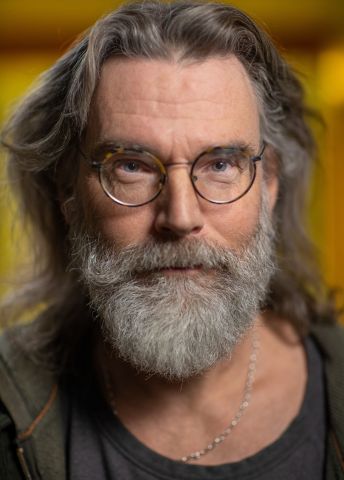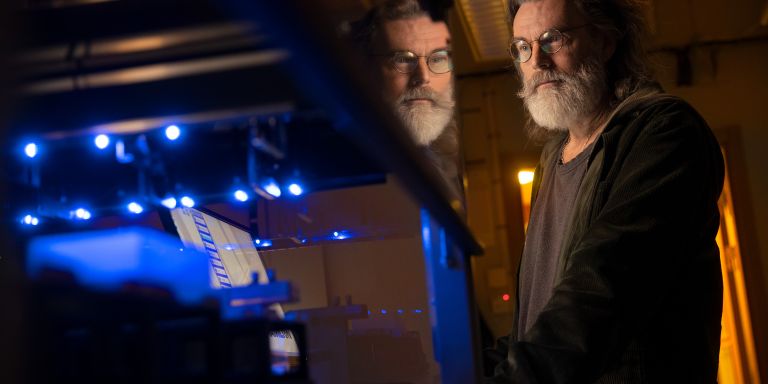
Thomas Nyström
Professor of Microbiology
Wallenberg Scholar
Institution:
University of Gothenburg
Research field:
Yeast as a model for ageing and age-related diseases


Wallenberg Scholar
Institution:
University of Gothenburg
Research field:
Yeast as a model for ageing and age-related diseases
Several neurodegenerative diseases that affect the elderly, such as Parkinson’s and Alzheimer’s, are caused by aberrant proteins that form clumps. But aggregations of aberrant protein occur not only in the brain; they are probably also a fundamental feature of ageing itself. For many years now, Nyström, who is Professor of Microbiology at the University of Gothenburg, has studied ageing in yeast cells as a model for human ageing. The processes that cause a cell to age and die are fairly similar from one living creature to another. Among other things, the cell loses its ability to find and remove aberrant proteins. Nyström’s research has involved study of this quality control process, i.e. the way in which cells detect and remove defective proteins. He was chosen as a Wallenberg Scholar in 2009, and used the grant to establish a collection of laboratory robots that can be used for genetic screening in a huge library of yeast cells.
“Thanks to the robots we can now take the next step. We want to know how the different quality control systems in the cell communicate with each other,” Nyström says.
He explains that earlier research in the field has focused on one part at a time, such as the role of the cell nucleus, or that of the cytoplasm. His team is studying two parts at the same time: the cell nucleus and the mitochondria, and is attempting to understand how they send signals to each other. Both contain DNA. Most of the DNA is found in the cell nucleus, but a small part is in the mitochondria. It is already known that mitochondria play a key role in several diseases of the elderly. Experiments on worms and fruit flies have revealed that certain defects in mitochondria accelerate ageing; others slow it down.
“Scientists have long known that defects occurring in the mitochondria impact the cell nucleus – genes are turned on and off. But signal paths between them have remained a mystery. How does the cell nucleus know that something has gone wrong in the mitochondria, and vice versa? We’re now studying how genes and mutations in mitochondrial DNA interact with their counterparts in the cell nucleus, in what are known as direct genetic interaction studies. No one has done this before. We’re really elated about it.”
“As a Wallenberg Scholar, I’ve been able to establish the robot platform, which is great to have. I also very much appreciate that the grant is open for basic research. ‘Do what you find interesting, as long as you produce something’. That’s the feeling I’ve been given.”
The analysis requires that changes be made in selected genes, both in the cell nucleus and in the mitochondria, so the researchers can systematically examine which ones make a difference. Altering mitochondrial DNA is complicated, since there are so many mitochondria in each cell. The Gothenburg researchers have enlisted the help of biochemistry professor Martin Ott, a Wallenberg Academy Fellow at Stockholm University, who has developed a method for the purpose. In addition, Nyström’s team has found a mutation that causes yeast cells to produce mitochondria without any DNA at all. Removing DNA from the mitochondria of certain cells enables the researchers to cross yeast cells with each other without producing a mishmash of mitochondrial DNA.
Within five years Nyström hopes that he and his colleagues will be able to present a map of the communication required for cell quality control, and show how it works in practice. This could ultimately pave the way for new drugs that block a given gene, for example, so that the protein for which it codes is not synthesized, or alternatively, genes are activated so more protein is produced.
Nyström also wants to carry out a large-scale analysis of how yeast cell genes gradually stop working during the ageing process. But it is not enough to sort the cells according to age, and map their gene function.
“Sometimes a mutation makes no difference in young cells, but has a greater impact in older ones. The young cell has a gene that cushions the effect, and that gene has stopped working during the ageing process. For us, it’s something of a Holy Grail to identify the genes that become important as one ages. We think it’s possible to perform this kind of analysis on yeast cells in particular.”
Throughout his entire research career Nyström has been interested in the conditions necessary for something to continue living. And all his life he has been interested in research. As a boy, he was drawn to nerdy characters like Professor Calculus in Tintin, always experimenting and making discoveries. He always thought it would be fun to do research, but could not imagine it would be his job.
“I never thought that I wanted to be a researcher when I grew up. Actually it sometimes feels that I’m still not sure… But joking aside, I ended up doing this, and found that it was incredibly enjoyable. It’s like getting paid for playing. The most fun thing of all is when something unexpected happens. You have to have an open mind and think ‘Goodness – how strange, we must take a closer look’, instead of just putting it to one side. What appear to be blind alleys can be the most rewarding of all.”
Text Lisa Kirsebom
Translation Maxwell Arding
Photo Magnus Bergström